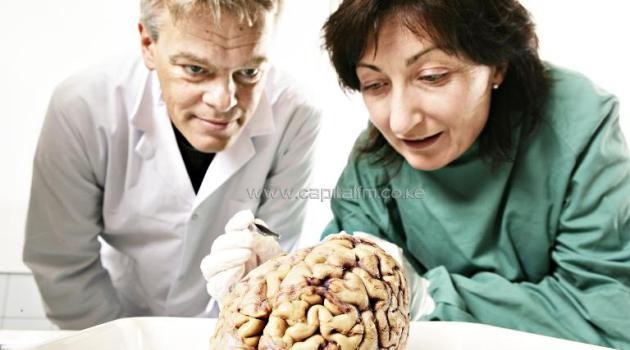
Norwegian scientists May-Britt Moser and Edvard Moser examine a human brain at the Kavli Institute for Systems Neuroscience in Trondheim, Norway/AFP
STOCKHOLM, October 6- British American researcher John O’Keefe on Monday won the Nobel Medicine Prize with a Norwegian couple, Edvard and May Britt Moser, for discovering how the brain navigates.
They earned the coveted prize for discovering a positioning system — an “inner GPS” — which enables us to orient ourselves in space, the jury said.
The research has implications for Alzheimer’s and other diseases of the brain, it said.
“The discoveries of John O’Keefe, May Britt Moser and Edvard Moser have solved a problem that has occupied philosophers and scientists for centuries,” it said.
“How does the brain create a map of the space surrounding us and how can we navigate our way through a complex environment?”
In 1971, O’Keefe discovered the first component of the system, finding that in lab rats, specific cells in the hippocampus were triggered when the animal was at a certain location in a room.
Other nerve cells were activated when the rat was at other places, leading O’Keefe to conclude that these “place cells” formed a map of the room.
More than three decades later, in 2005, May-Britt and Edvard Moser discovered another piece of the invisible positioning system.
They identified “grid cells” – nerve cells which generate a coordinated system, rather like longitude and latitude, and allow the brain to make precise positioning and pathfinding.
Research into grid cells may give insights into how memories are created — and explain why when we recall events, we so often have to picture the location in our minds.
The jury pointed out that sufferers of Alzheimer’s disease often lose their way and cannot recognise the environment.
“Knowledge about the brain’s positioning system may, therefore, help us understand the mechanism underpinning the devastating spatial memory loss that affects people with this disease,” it said.
– Prizewinner ‘in shock’ –
May Britt Moser told the Nobel Foundation that she was “in shock”, and that her husband didn’t even know yet as he was on a plane to Munich.
“We have the same vision, we love to understand and we do that by talking to each other, talking to other people and then try to address the questions we are interested in, the best way we can think of,” she said.
“And to be able to discuss this when you get an idea on the spot instead of (having to) plan a meeting in one or two or three weeks — that makes a huge difference.”
The jury said the work had led to a “paradigm shift” in understanding how groups of specialised cells work together in the brain.
The question of place and navigation has occupied philosophers for centuries and was a central problem for German thinker Immanuel Kant, it said.
In a comment, Andrew King, a professor of neurophysiology at Britain’s University of Oxford, said O’Keefe had “revolutionised our understanding.”
“This work and that of May-Britt and Edvard Moser also highlights the importance of electrophysiological studies in animals for revealing major insights into how the brain works.”
John O’Keefe was born in 1939 while May-Britt Moser was born in 1963 and her husband Edvard Moser in 1962.
The winners will share the prize sum of eight million Swedish kronor ($1.1 million, 881,000 euros), with one half going to O’Keefe.
Last year, the honour went to James Rothman, Randy Schekman and Thomas Suedhof, all of the United States, for their work on how the cell organises its transport system.
In line with tradition, the laureates will receive their prize at a formal ceremony in Stockholm on December 10, the anniversary of prize founder Alfred Nobel’s death in 1896.









































